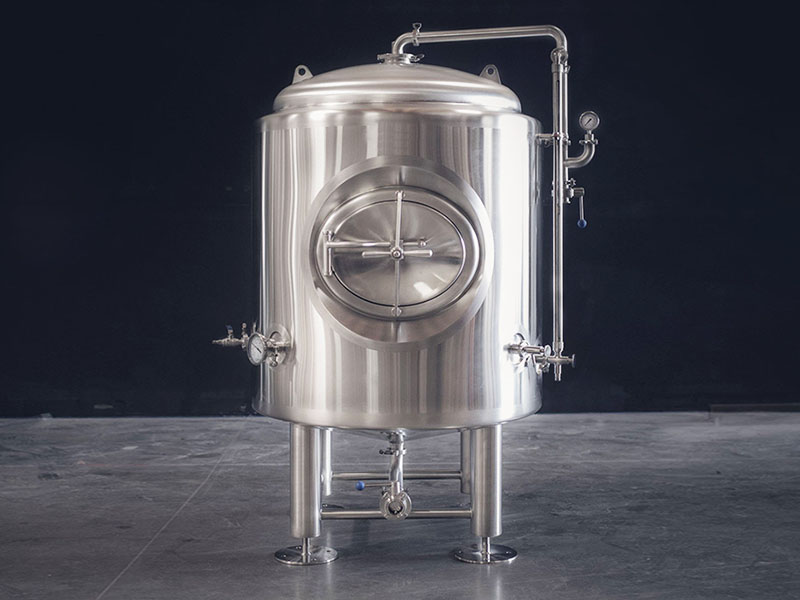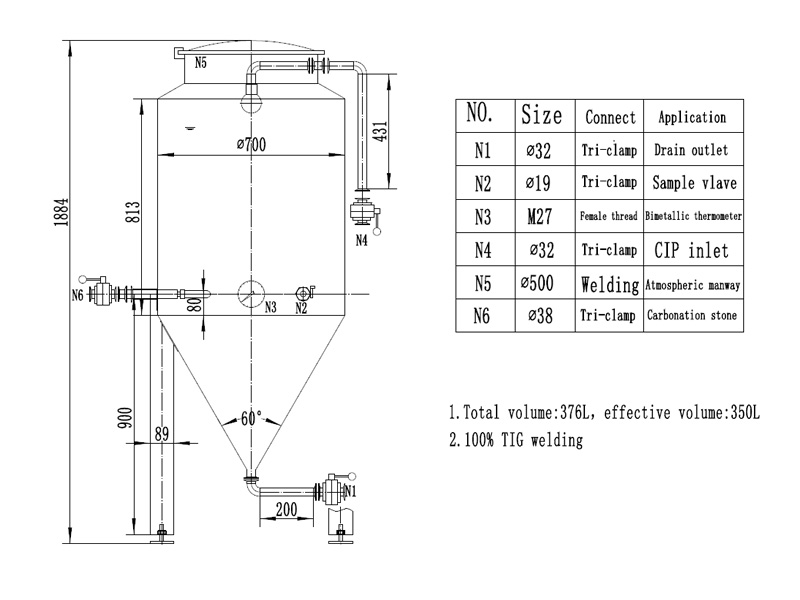Cold Brew Coffee Equipment
Faster brewing. Better taste. Higher volume. Less space.
Commercial Cold Brew Coffee Equipment
All of our commercial cold brew coffee equipment is designed exclusively for large cold brew coffee production. These cold brew systems are engineered using premium virgin 304 stainless steel, allowing you to make large quantities of cold brew coffee with ease. How is cold brew different from regular coffee? Unlike regular coffee, cold brew is never exposed to heat and therefore produces a smoother, less acidic coffee drink.
Whether you are currently a coffee roaster who needs to add a cold coffee tank to your roastery, or a cold brew coffee lover with dreams of opening your own cool coffee shop, we have the brewing equipment and expertise to help get you there.

How it works?
- Choose your roast and grind size. Unlike immersion, you can grind all the way down to fine or very fine particle size if you prefer.
- Place your chosen grind into the Tanks.
- Connect your water source.
- Use the control panel to choose your remembered brew profile, or enter the parameters of your brew, including flow rates, and anticipated brew time.
- Adjust the spray nozzle to get optimum extraction pattern.
- Start brewing.
- Monitor the cold brew for your brew parameters and flavor, until you are done.
- Dispose of grinds, clean and repeat the brew.

FAQs
1What are the benefits of adding cold brew to my coffee shop?
Cold brew coffee offers cafés a product to serve when the weather gets warmer, as well as being great for warmer climates where hot coffee consumption is limited. Cold brew can help boost sales year round, being the fastest growing trend in the independent roasting sector. With the right tools, you can make cold brew a part of your cafe, restaurant, or bar.
2When do I make the switch to a professional stainless steel cold brew system?
Brewing cold brew in a plastic Toddy in 1 gallon or even 15 gallon batches can work well for a 1 location independent café. But if you own multiple cafés, or a roaster who distributes your coffee to multiple retailers, you might soon have the volume to justify a professional grade stainless steel cold brew system.
A bigger consideration is sanitation. Plastic is a notorious medium for harboring bacteria. Any scratch in the plastic will provide a hiding place for bacteria where they can avoid most sponges, brushes and soaps. A colony of bacteria in your brewing vessel can ruin your flavors and provide a food safety issue. All of our tanks are made from food grade 304 stainless steel, with every weld and surface polished. There is no place for bacteria to hide. Our stainless will preserve your flavors, protect your customers, and be easy to clean and maintain for years to come.
A bigger consideration is sanitation. Plastic is a notorious medium for harboring bacteria. Any scratch in the plastic will provide a hiding place for bacteria where they can avoid most sponges, brushes and soaps. A colony of bacteria in your brewing vessel can ruin your flavors and provide a food safety issue. All of our tanks are made from food grade 304 stainless steel, with every weld and surface polished. There is no place for bacteria to hide. Our stainless will preserve your flavors, protect your customers, and be easy to clean and maintain for years to come.
3What will I need to make cold brew?
A good cold brew system has three components: A brew vessel, filtration system, and a storage/packaging vessel. The size of your system will dictate the size of the components.
4How do I get nitro cold brew?
There are several ways to infuse nitro into your cold brew. There is some equipment available on the market that will allow you to infuse nitro into your coffee as you serve it. This can be a good option for a small café that doesn’t have the space for professional grade equipment. You can infuse nitro in the keg. Once your coffee is kegged, you add extra pressure of nitrogen through the regulator. Over time the coffee absorbs the nitro particles. Once the nitrogen is infused, you’ll need to maintain higher pressure on the keg and pour at a higher pressure -- at least 40 PSI. The keg should be kept chilled at 38 degrees Fahrenheit.
We recommend nitrogenating in your storage vessel. Our bright tanks are designed to allow you to nitrogenate several batches at once. Once the coffee is in the storage tank, you infuse nitrogen directly into a nitrogenation stone. From there you can keg it, bottle, or can it.
We recommend nitrogenating in your storage vessel. Our bright tanks are designed to allow you to nitrogenate several batches at once. Once the coffee is in the storage tank, you infuse nitrogen directly into a nitrogenation stone. From there you can keg it, bottle, or can it.
5How cold brew coffee and craft beer go together
Cold brew is where the craft beer and coffee worlds converge. The craft brewery and cold brew coffee consumer are often the same person. They value craft, flavor, and skilled local production. Craft brew consumers frequently value a high-quality coffee in the morning. Cold brew consumers often enjoy a flavorful craft beer in the evening. Our brewery customers often add artisan coffee to their taprooms to drive traffic early in their day. Coffee shops are adding kegerators for cold brew coffee and taps for craft beer to give their customers more options late in the afternoon.
Lagers and ales ferment at precise temperatures, and hops are added to beer at the right moment to preserve the fresh aroma. We understand how to brew your coffee at the right temperature and time to make the best cold brew possible. Whether it is barley grains or coffee grounds, you will be able to engineer your best brew yet.
Lagers and ales ferment at precise temperatures, and hops are added to beer at the right moment to preserve the fresh aroma. We understand how to brew your coffee at the right temperature and time to make the best cold brew possible. Whether it is barley grains or coffee grounds, you will be able to engineer your best brew yet.
